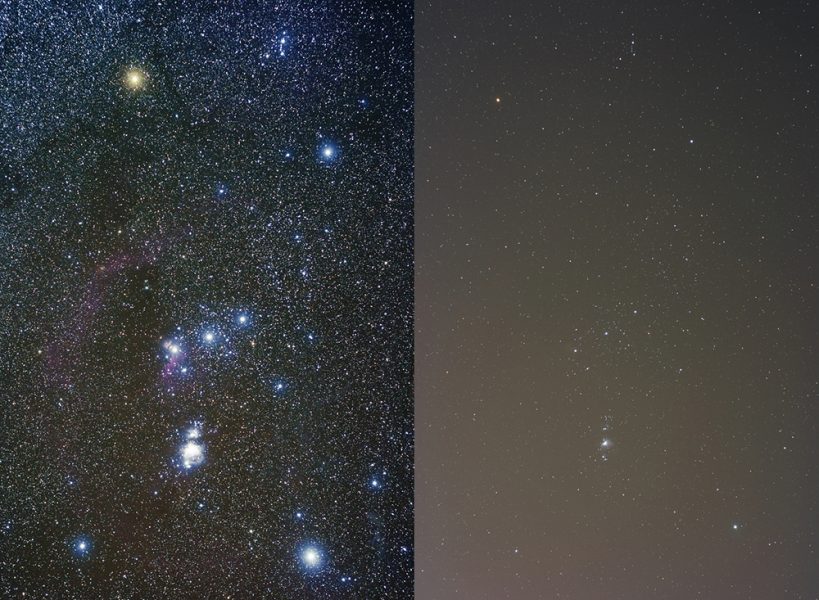Too much of a good thing – the problem of light pollution Understand article
Blinded by the light: We rely on lights to see in the dark, but did you know that light pollution has serious environmental consequences?
What is light pollution?
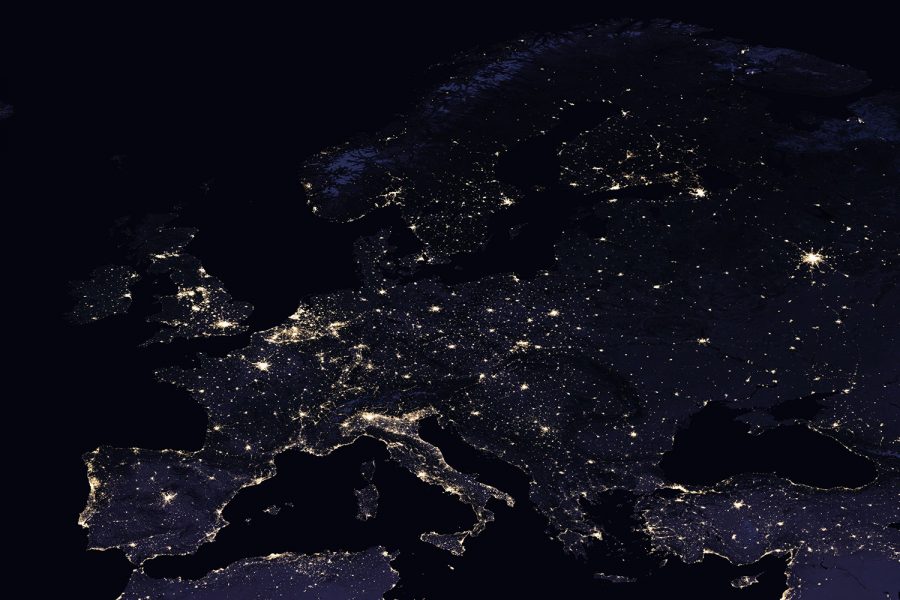
Image: NASA Earth Observatory images by Joshua Stevens, using Suomi NPP VIIRS data from Miguel Román, NASA’s Goddard Space Flight Center, Public domain
Light pollution mainly comes from street lighting, security lighting, stadium lighting, and vanity lighting (illuminated buildings and monuments, sky beams, and lasers). Why are these considered to be polluting? Surely, we need light at night to move around in safety and security. That is true, but these lights are often excessively bright, unnecessary, or not suited for their purpose. A balance needs to be struck where we can have the light we need at night with minimal impact on the environment.
Effect on astronomy
Lighting affects stellar visibility through reflections off surfaces, scattering by aerosols, and intrusion into properties, to such an extent that most people have never seen the Milky Way.
Badly designed lights allow light to shine out into the environment, and light pollution is increasing at a rate of between 2 and 6% per year, meaning that truly dark skies don’t exist in many areas. If all the professional and amateur astronomers around the world miss the next asteroid on a collision course with Earth due to global light pollution, then we will only have ourselves to blame.
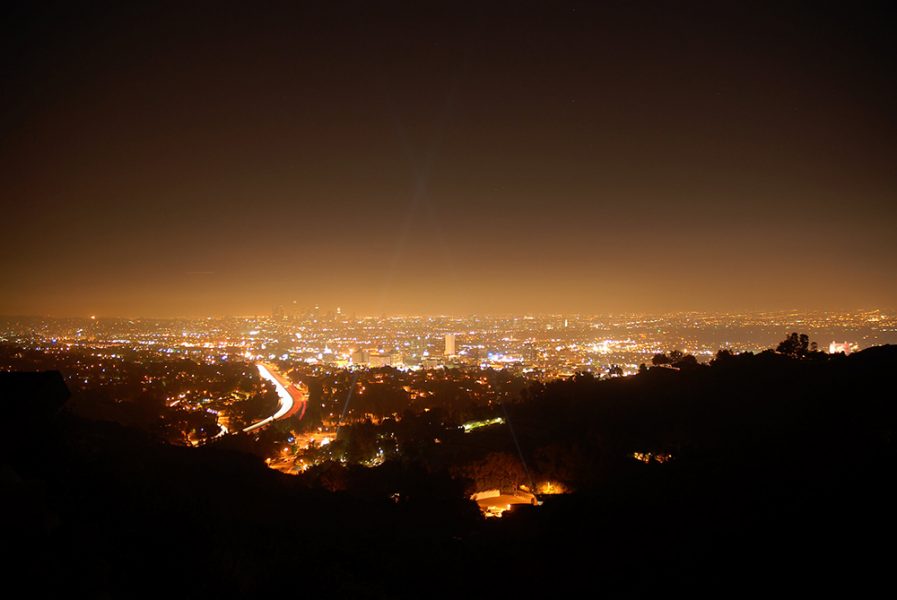
Image: Mike Knell/Flickr, CC BY-SA 2.0
Effect on wildlife
Animals
It is well known that insects are attracted to lights and will spiral around them until they drop to the ground from exhaustion.[1,2] One light is not going to make much difference, but expand that to all the lights in all the cities around the world, and the situation becomes very serious.
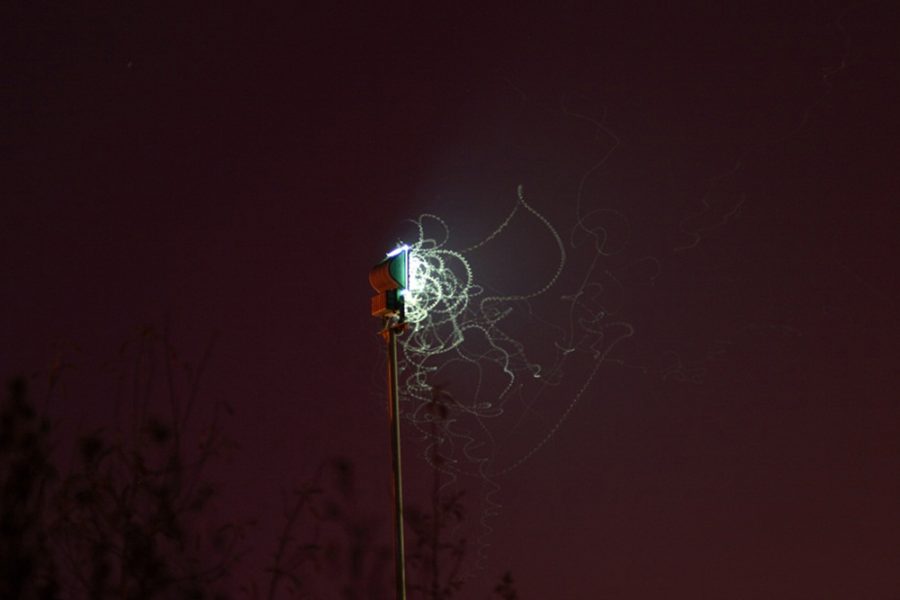
Image courtesy of the author
UK environmental organisations, such as Buglife, and the German Centre of Integrative Biodiversity Research have reported substantial declines in insect populations, as measured by car number plate ‘splatometers’. This decline is partly due to pesticides and habitat destruction, but light pollution is also a major contributing factor.[3]
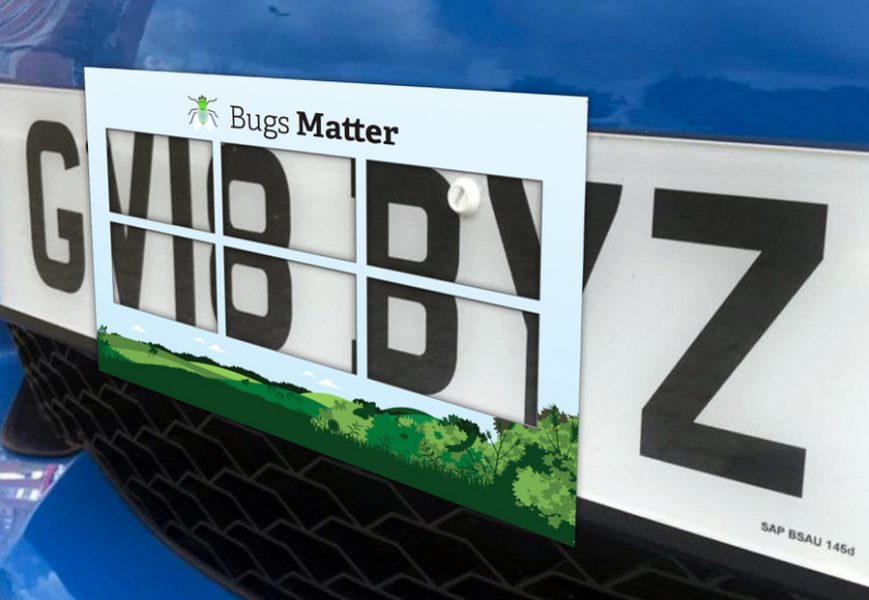
©Buglife, used with kind permission
Insect decline is a major concern for two reasons. Firstly, insects lie at the bottom of the food web. If insects decline, there will be an effect on animals that depend upon them for food, such as spiders, amphibians, reptiles, birds, and small mammals. Secondly, insects are important pollinators, so, if they decline, there will be a reduction in plant numbers and diversity. This, in turn, can leave insects with less to eat, initiating a negative spiral. This is important for humans, since insects often pollinate the crops we depend on for food.
Bats are known to eat about 3000 insects per night, so, if insect populations decline, this could put severe pressure on bat populations. Bats need to build up fat reserves to survive the winter hibernation period, and insufficient food also lowers their resistance to disease. Outbreaks of white-nose syndrome,[4] caused by the fungus Pseudogymnoascus destructans, have occurred in the USA, where starving bats have been seen foraging over winter. Bats eat large numbers of mosquitoes, so, if bat populations decline, mosquito populations may increase. This could lead to mosquito-borne diseases spreading to new areas.[5]
Birds and dung beetles use the stars and the Milky Way to navigate.[6] If these light sources are drowned out by all-pervasive light pollution, the birds and beetles get confused and lose their way. In tropical countries, turtle hatchlings are attracted to moonlight reflecting off the sea, but they can be confused by illuminated beach fronts and fail to reach the water.[7]
Plants
In addition to the effect on insect pollinators, light pollution can prevent plants from adjusting to the seasons by interfering with the function of phytochromes. These plant hormones govern photoperiodism,[8] whereby plants measure the hours of darkness and time to bloom,[9] produce seeds, or drop their leaves. Disruption of photoperiodism can have consequences for crop production and lead to a decline in the survival and diversity of wild plants. For example, deciduous trees exposed to artificial light tend to retain their leaves in winter.
Effect on energy use
Finally, lighting requires energy for its manufacture and operation, which has financial and environmental consequences. A recent study demonstrated that a small municipality in Italy used 60% of its energy consumption on street lighting.[10] Reducing light pollution will thus also reduce our carbon footprint and make a positive contribution to combatting climate change.
What can be done?
So, if light pollution is such a serious environmental problem, what are the solutions? Street and other forms of lighting should be used only where and when needed, in the correct amounts, and using appropriate dark-sky-compliant lighting technology. For example, LED street lighting in quiet residential and suburban areas can be motion operated and turned off from 11 p.m. until dawn. Furthermore, street lighting does not necessarily reduce crime.[11,12]
In rural areas, street lighting should not be used, since there are alternative methods of ensuring road safety (such as raised crash barriers and cat’s eye reflectors[13,14]). Vanity lighting that does not serve any useful purpose should be banned or at least discouraged.
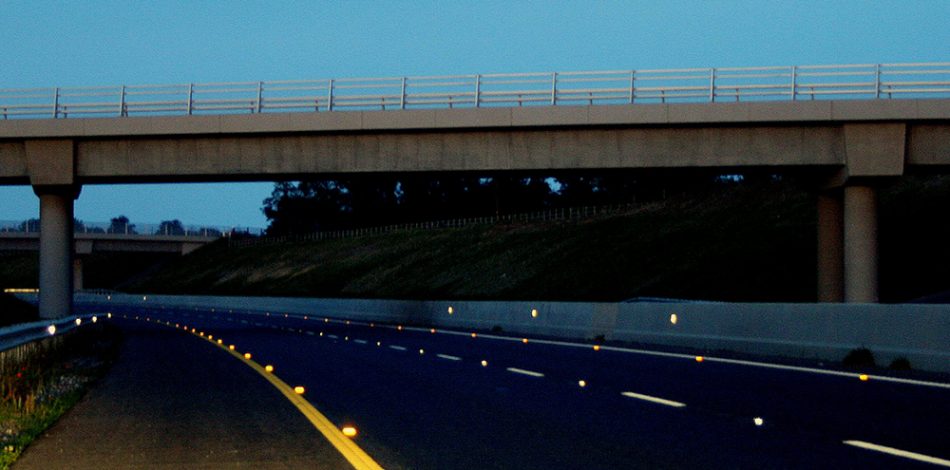
Image: Zoney/Wikimedia, CC BY-SA 3.0
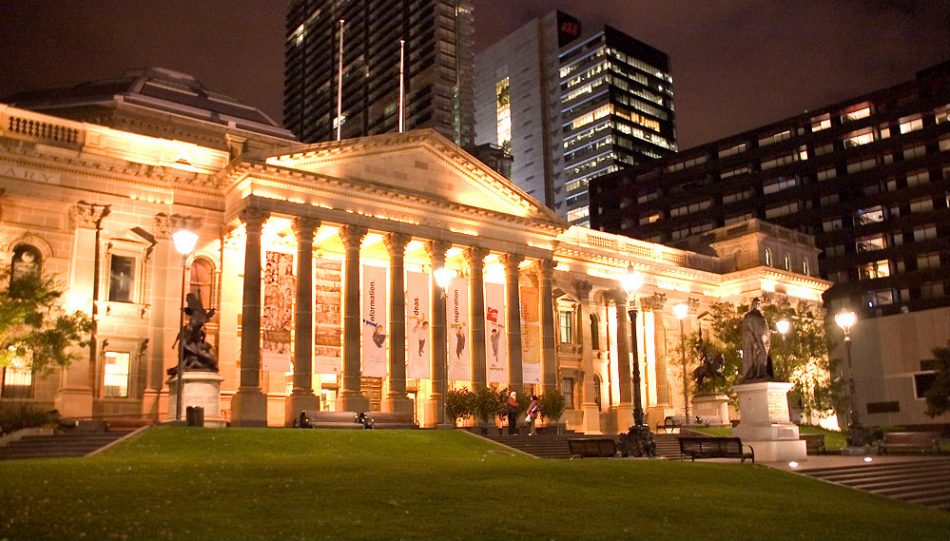
Image: Decryption512/Wikimedia, CC BY-SA 2.5
The type of lights can also be adapted to minimize harmful effects. Bulbs should be fully recessed into their housings, to reduce intrusion onto neighbouring properties. They should not exceed a luminosity of 400 lumens, and their colour temperature should not exceed 1750 K to reduce the harmful blue component. This will deliver a warm orange glow, like the old sodium-vapour SOX lighting.
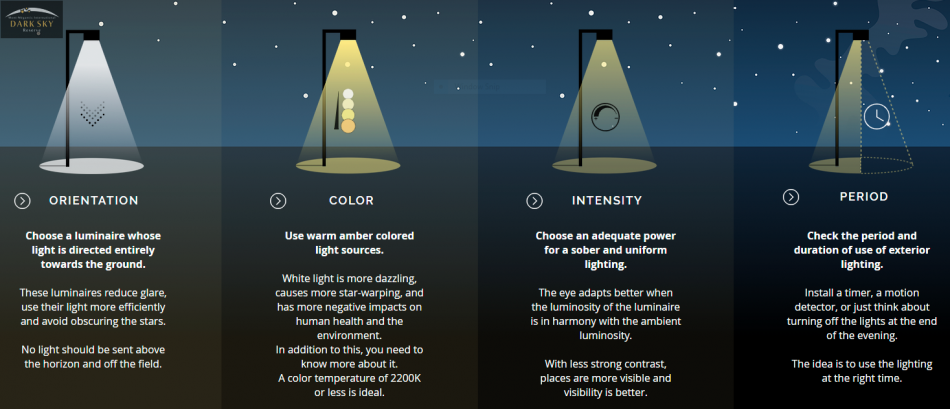
©Rémi Boucher/Mont-Mégantic International Dark Sky Reserve
Adopting these measures against light pollution will not lead to a loss in safety and security, but will greatly alleviate the serious problems caused by light pollution.
References
- [1] Electricity and English songbirds. Los Angeles Times 14 September 1897.
- [2] Henshaw C (1994) The ecological implications of light at night. Journal of the British Astronomical Association 104: 312.
- [3] Owens ACS et al. (2020) Light pollution is a driver of insect decline. Biological Conservation 241: 108259. doi: 10.1016/j.biocon.2019.108259
- [4] An article on the white-nose syndrome from the National Park Service website: https://www.nps.gov/articles/what-is-white-nose-syndrome.htm
- [5] Reiskind MH, Wund MA (2010) Bats & Mosquitoes. Bat Conservation International 28: 6.
- [6] Dacke M et al. (2013) Dung beetles use the Milky Way for orientation. Current Biology 23: 298–300. doi: 10.1016/j.cub.2012.12.034
- [7] Information from the Sea Turtle Conservancy on the threats from artificial lighting to sea turtles: https://conserveturtles.org/information-sea-turtles-threats-artificial-lighting/
- [8] Chaney WR (2002) Light pollution harms plants in the environment: does night lighting harm trees? FAU Astronomical Observatory
- [9] ffrench-Constant RH et al. (2016) Light pollution is associated with earlier tree budburst across the United Kingdom. Proceedings of the Royal Society B 283: 20160813. doi: 10.1098/rspb.2016.0813
- [10] Fiaschi D, Bandinelli R, Conti S (2012) A case study for energy issues of public buildings and utilities in a small municipality: investigation of possible improvements and integration with renewables. Applied Energy 97: 101–114. doi: 10.1016/j.apenergy.2012.03.008
- [11] Morrow EN, Hutton SA (2000) The Chicago alley lighting project: final evaluation report. Illinois Criminal Justice Information Authority.
- [12] Steinbach R et al. (2015) The effect of reduced street lighting on road casualties and crime in England and Wales: controlled interrupted time series analysis. J Epidemiol Community Health 69: 1118–1124. doi:10.1136/jech-2015-206012
- [13] Information on the history of cat’s eyes: https://www.ypsyork.org/resources/yorkshire-scientists-and-innovators/percy-shaw/
- [14] Henshaw C (2017) The social implications of light at night (LAN).
- [15] Claudio L (2009) Switch on the night: policies for smarter lighting. Environmental Health Perspectives 117: A29–A31.
Resources
- Find out how much light pollution there is in your region using this interactive map from the Cooperative Institute for Research in Environmental Sciences at the University of Colorado Boulder.
- Read a nice introduction to light pollution from the International Dark-Sky Association (IDA).
- Learn about the principles of responsible outdoor lighting in this short guide from the Mont-Mégantic International Dark Sky Reserve.
- Learn more about the effects of light pollution on wildlife in this article from BBC news.
- Read an article from National Geographic for a much more in-depth discussion on the problem of light pollution.
Review
Looking for a real-life issue to be used to address many science topics within different subiects? Try this interesting article on light pollution.
A concise but comprehensive overview on the types of night lighting sources, the consequences of night lighting, and proposals for mitigating their impact, make this article useful to address the topic with students of different ages.
Moreover, the article is well written and easy to read and contains useful resources for further discussion.
The article could be used for comprehension exercise. Possible questions include:
1) According to the article’s author, the categories of the sources of light pollution are:
a) Street lighting, stadium lighting, security lighting and lasers
b) Street lighting, stadium lighting, open-air cinemas and sky beams
c) Street lighting, vanity lighting, security lighting and stadium lighting
d) Street lighting, security lighting, Christmas illuminations and stadium lighting
2) Which of the following organisms are NOT affected by night lighting?
a) Marine reptiles
b) Nocturnal insects
c) Photoperiodic plants
d) Cave-dwelling insects
3) According to the article’s author the bulbs to be used for night lighting should have the following characteristics:
a) luminosity ≥400 lumens and colour temperature ≥1750 K
b) luminosity ≤400 lumens and colour temperature ≤1750 K
c) luminosity ≥400 lumens and colour temperature ≤1750K
d) luminosity ≤400 lumens and colour temperature ≥1750 K
Giulia Realdon, former science teacher; currently an education researcher and teacher trainer, Italy






